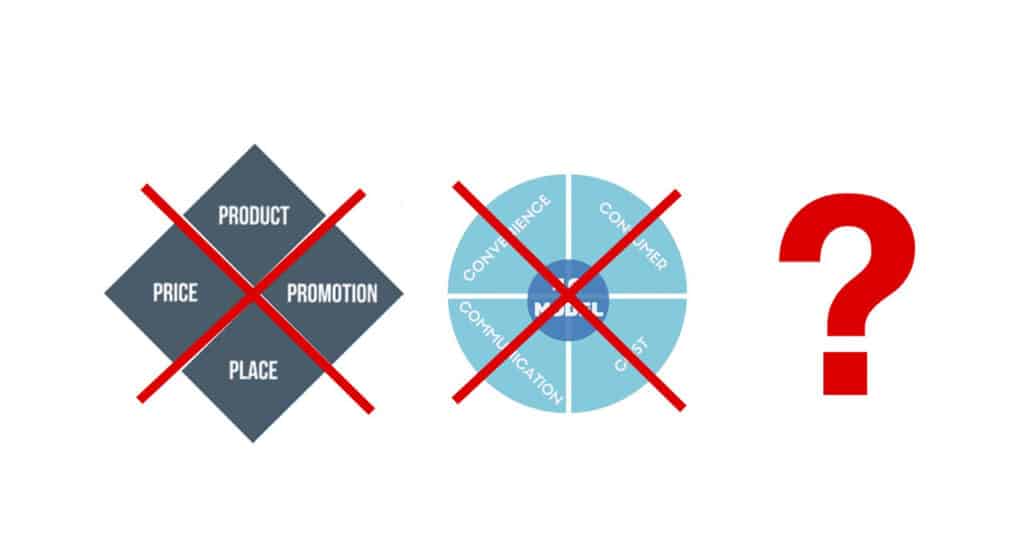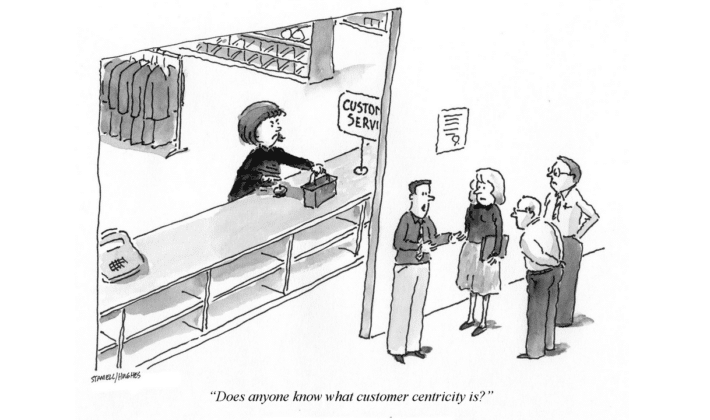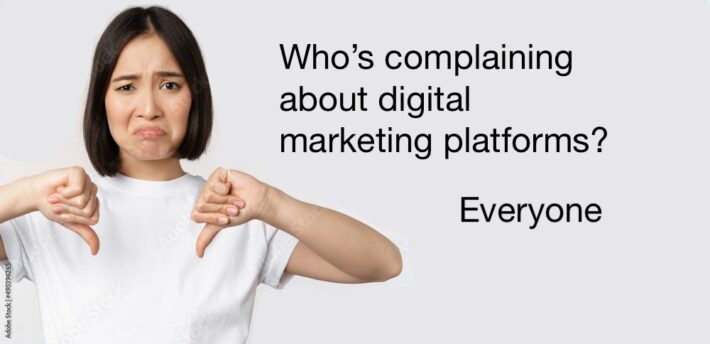Time to toss the 4 P’s and reinvent the 4 C’s?

The 4 P’s of marketing (Product, Price, Place and Promotion) still get bandied about in business speak but have their roots to a time when marketers thought of consumers as shoppers who would follow their orders when presenting a product at a reasonable price, putting it in the right place and telling them where it is. All very linear and neat.
That way of thinking goes back 60 years when it first appeared in a marketing text by a business professor named E.J. McCarthy. If you were around then, you would have been watching TV shows like Gunsmoke, Leave it to Beaver and advertising wizard Rob Petrie in the Dick Van Dyck Show. You probably watched them with the rest of your family on your 12 inch black and white TV, although Mom, of course, was in the kitchen making Betty Crocker Brownies for your enjoyment. The four P’s has little relevance to today’s world but it is often referred to as if it is still a mantra for business fundamentals.

It took 30 years to recognize how things had changed when Robert Lauterborn, now a professor at the University of North Carolina, suggested that the 4 C’s (Consumer, Cost, Convenience and Communication) were more representative of the world we were living in. That’s when the Dow-Jones Index was dominated by companies like Bethlehem Steel, Westinghouse, Texaco and Kodak. I think you’ll find them in an industrial cemetery today. Which was your favorite? The Sony PlayStation or the Nintendo Game Boy?

Neither the four P’s nor four C’s seem relevant today although at least the 4 C’s acknowledge that the consumer is king or queen. Even before the pandemic hit, we have to recognize that our world has changed dramatically and with it the way businesses and consumers interact. Now, it’s estimated that the pandemic has moved us forward a decade in the way we work and live, and has created a new marketing ecosystem for us to maneuver.

Our relationship between home and work lives is nothing like it was only six months ago and is likely to remain this way for the foreseeable future. Pre-pandemic, we lived a life where we went to work, and sat in cubicles, offices and conference rooms. We left our lives as consumers at home. Now, the two have merged and weave in and out of our daily routines. The kids may be home and need some parental time. Grocery deliveries have to be dealt with and the desks or dining tables where we work are cluttered with reminders of bills, taxes, catalogs and magazines (or website tabs on our browsers). We struggle to clear it all away and conduct our jobs but daily necessities distract and disrupt. The pandemic has created a new marketing ecosystem and it’s time to think of a different mantra for business.
Now, I’m no E.J. McCarthy or Robert Lauterborn — far from it. However, I might suggest that we stick with 4 C’s because they’ll remind us of consumers but that we rethink them as:
Community, Conscience, Credible, Consistent
Let me explain:
1. Community: We recently conducted a survey of 530 business executives, 92% of them in leadership positions. They wrote of the need to come together, to support and help our local residential and business communities. They wrote of the need for empathy to better understand the chaotic world that customers and neighbors are living in. Businesses need to find, foster and nurture prospective communities among their customers. That can only be done by reaching out to understand how people are dealing with the issues these times are throwing at them every day. This means that the product and brand may be secondary and that other factors such as listening and acknowledgment may be more important. It’s not losing sight of the brand or needing to make a sale but recognizing that customers are bestowing their patronage on us and will respond if we show them our interest.
2. Conscience: The 2008/2009 recession shook the need for “bling” out of consumer desires or at least, made it more “inconspicuous consumption”. We’re now at a point where luxury is less about acquisition and experiences than it is about responsibility, sustainability and safety. Research of the upcoming Generation Z (7 – 22 years old) has increased the trend of placing a higher priority on values over value. Businesses that show they have a conscience and can do good while making money will gain consumer loyalty and grow as a result.
3. Credible: This is about authenticity. If your commitment to building a community and to adhering to a set of values and high ethical standards is not believable, it will show through in a second. The classic example of not being credible is when Pepsi ran an ad featuring Kendall Jenner calming the police and showing her alignment with a group of protestors by handing them cans of Pepsi. That ad caused an uproar for its cultural appropriation and lack of a credible connection to PepsiCo. On the other hand, companies like Patagonia walk the talk by aligning their social and environmental values with their employees and customers.
4. Consistent: The world is different now and adapting to it is not a one-time thing. We can’t pick up a cause or take on new values with our employees and customers and then neglect them over time. Building customer loyalty is a long-term process. Think of loyalty as a piggy bank that, as it fills, increases your equity with your customers. With each coin deposit, you increase equity but it will take time to fill completely. Break it early and equity and your customers’ brand loyalty get broken too.
If you accept these 4 C’s as a good approach in today’s business environment, how should you proceed? The answer is not employing a set of tactics. Many companies are turning to social media to convey the four values described above and while it may be useful, recognize that it’s simply another form of broadcasting. You’ll need more in your toolbox than that. Before you start thinking about any communication tools, you should evaluate whether your marketing strategy is right for today and review all aspects of marketing to create better alignment with what consumers value.
Ask, listen, acknowledge, then respond specifically is the way we communicate constructively on a one-to-one basis. It should be no different with large groups of customers and it’s the key to establishing the four values listed above.
Oomiji is technology platform that enables companies to follow the ask, listen, acknowledge, then respond model. Contact us to learn more and see a live demo.



